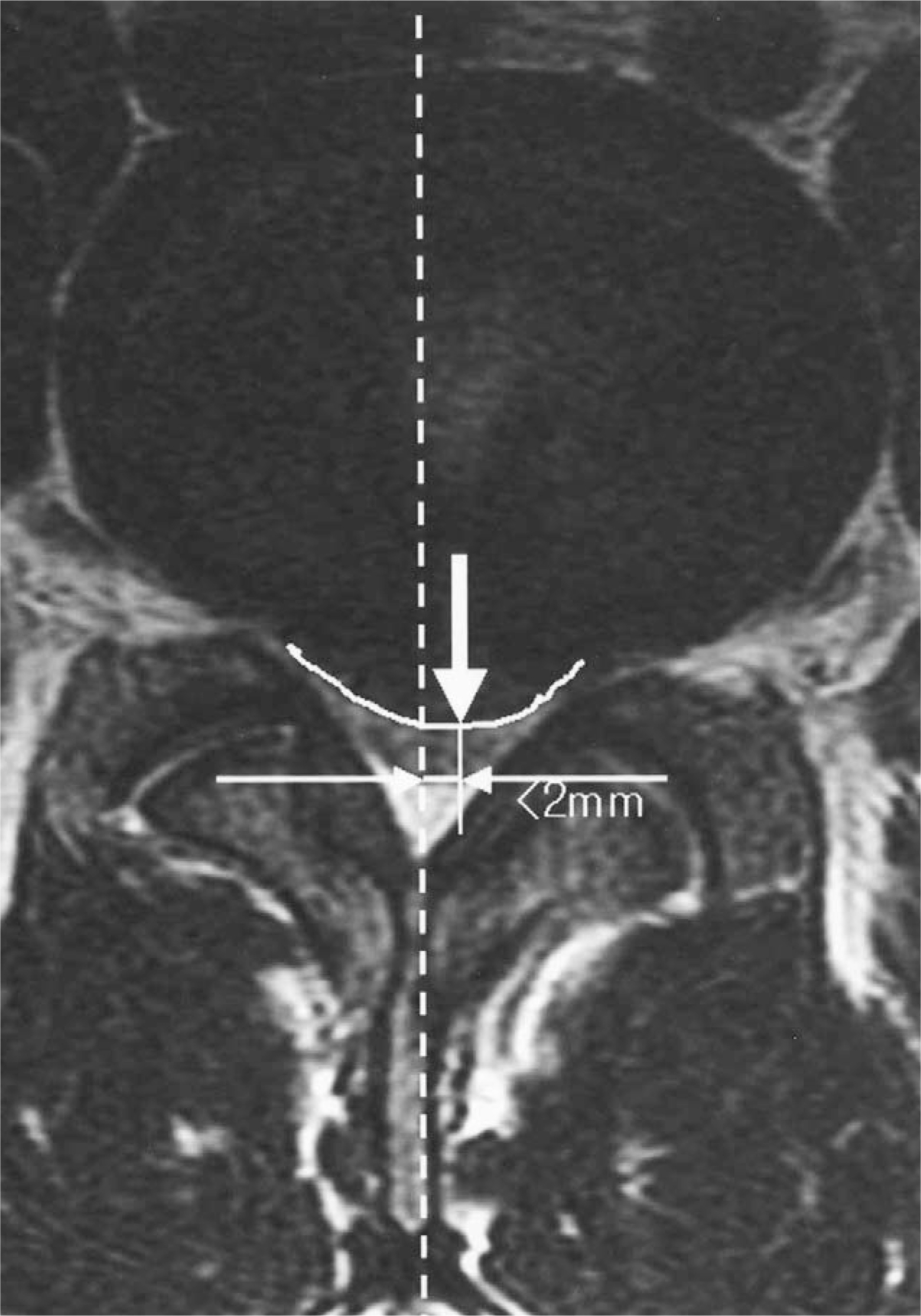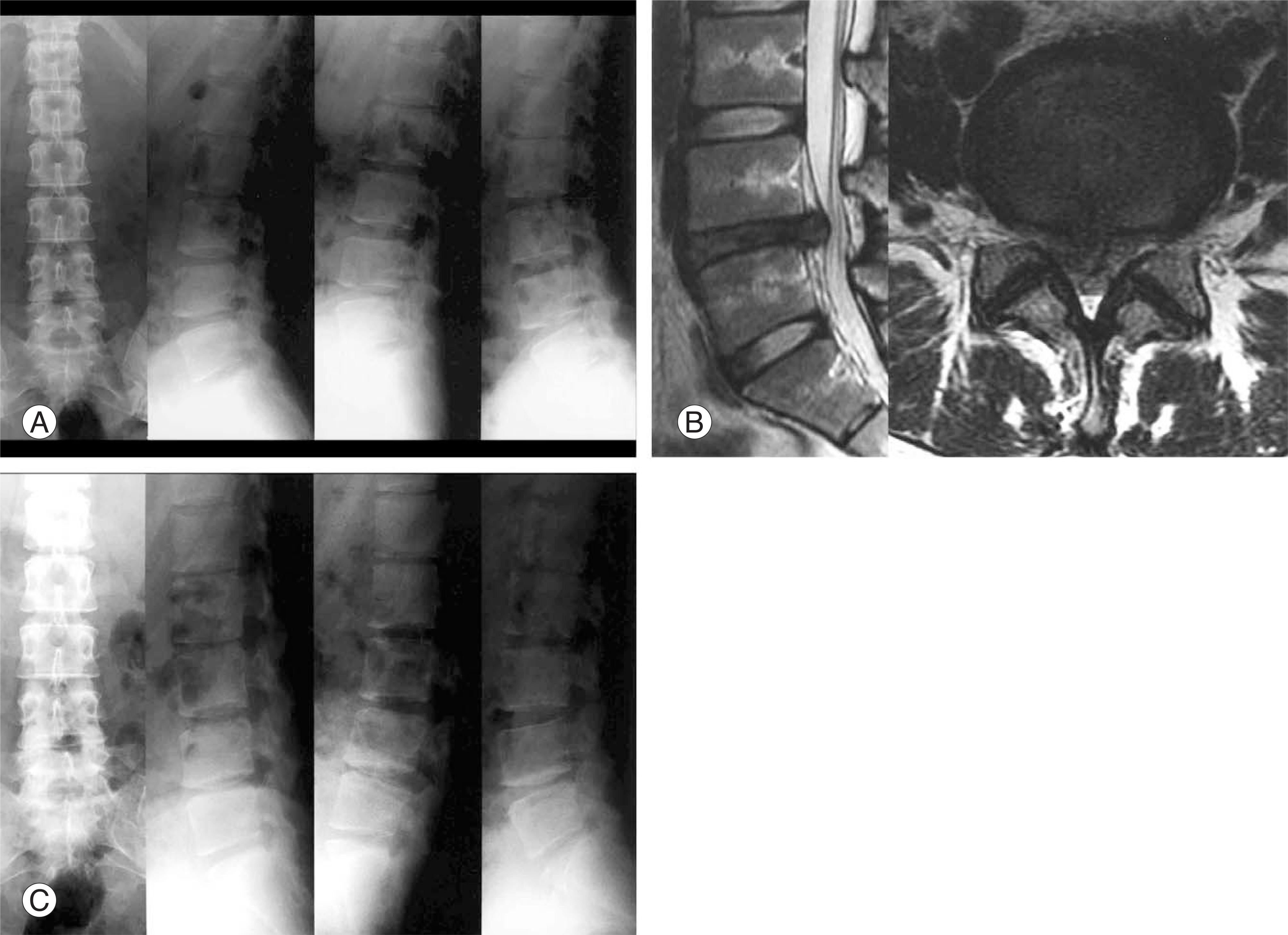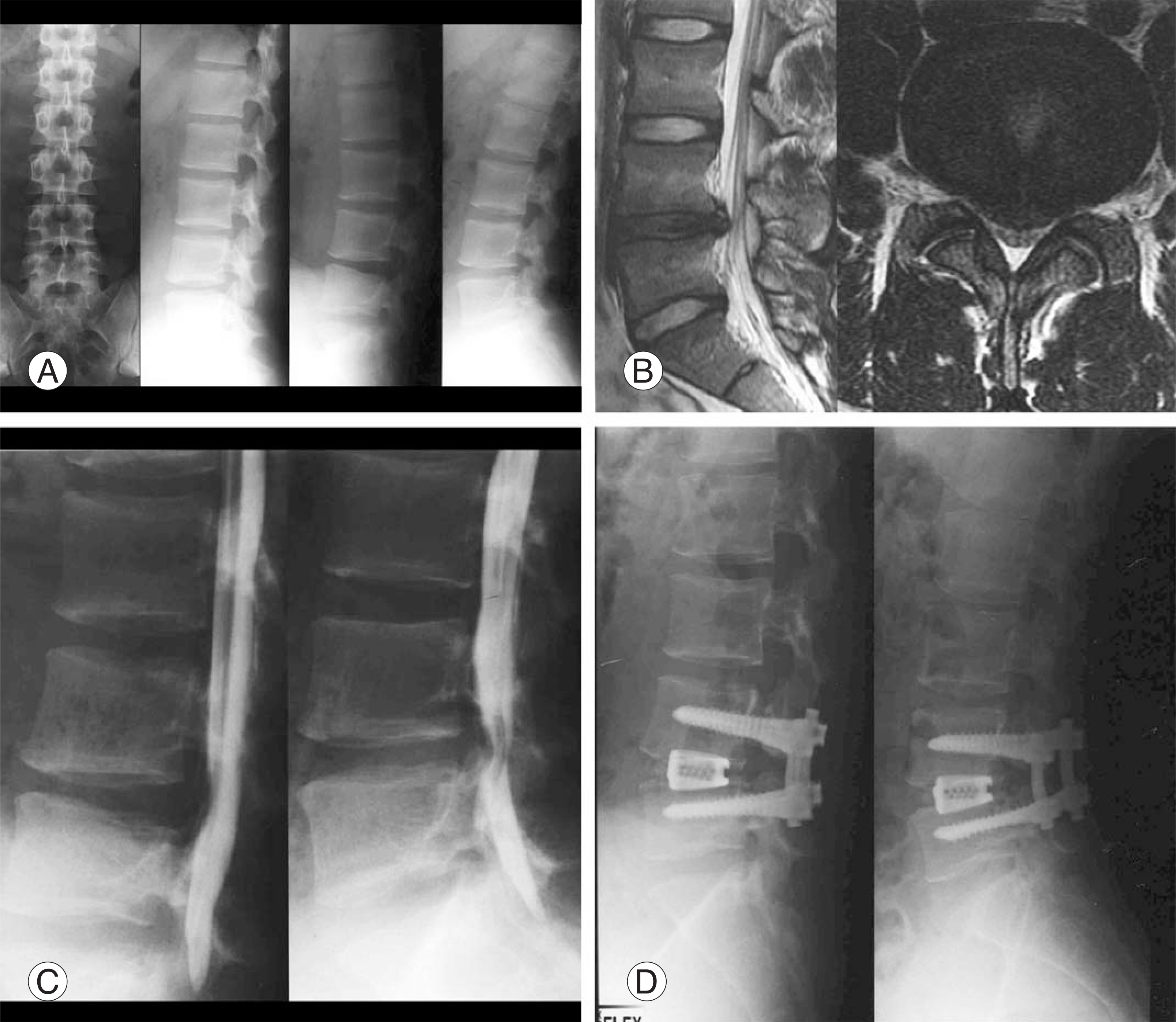J Korean Soc Spine Surg.
2006 Jun;13(2):93-100. 10.4184/jkss.2006.13.2.93.
Clinical Outcome after Surgical Treatment of the Central Disc Herniation
- Affiliations
-
- 1Department of Orthopaedic Surgery, Spine Center, Soonchunhyang University College of Medicine, Seoul, Korea. schsbj@hosp.sch.ac.kr
- 2Department of Orthopaedic Surgery, Soonchunhyang Gumi Hospital, Gumi, Korea.
- KMID: 2097824
- DOI: http://doi.org/10.4184/jkss.2006.13.2.93
Abstract
-
STUDY DESIGN: This is a retrospective study
OBJECTIVE
We wanted to to assess the clinical features of central disc herniation and the differences in the clinical outcome between discectomy and fusion. Summary of the literature REVIEW: Central disc herniation appears to have poorer results than does posterolateral herniation in the literature. In most reports, persistent back pain was often found after discectomy and it may be related to the anatomical characteristics of the posterior longitudinal ligament in the lower lumbar region. MATERIALS AND METHOD: Central disc herniation was defined as a herniated mass that occupied more than 50% of the spinal canal and the maximal deviation of the apex was within 2 mm from the midline. 27 patients were operated on with using these criteria and they were subdivided by the operation methods. Laminotomy and discectomy was done in 20 patients. Posterior lumbar interbody fusions were performed on the other 7 patients with significant back pain. We compared the neurological improvement and the clinical outcomes.
RESULTS
Preoperative back pain was significantly more frequent in the PLIF group. The other clinical features were significantly improved in the both groups, but the differences were not statistically significant. Satisfactory clinical outcomes were obtained in 70 percent of the discectomy group and in 100 percent of the PLIF group, respectively, but this was not significantly different.
CONCLUSION
The presence of significant back pain was considered as an indication for performing fusion in our series. The clinical outcome of central disc herniation after PLIF was slightly better than that of discectomy in spite of the preoperative back pain in the PLIF group, but the difference was not statistically significant.
Keyword
MeSH Terms
Figure
Reference
-
01). Spangfort EV. The lumbar disc herniation: a computer-aided analysis of 2504 operations, Acta Orthop Scand Suppl. 1972. 142:1–95.02). Barlocher CB., Krauss JK., Seiler RW. Central lumbar disc herniation. Acta Neurochir. 2000. 142:1369–1375.03). Walker JL., Schulak D., Murtagh R. Midline disk herniations of the lumbar spine. Southern Med J. 1993. 86:13–17.
Article04). Ohshima H., Hirano N., Osada R., Matsui H., Tsuji H. Morphologic variation of lumbar posterior longitudinal ligament and the modality of disc herniation. Spine. 1993. 18:2408–2411.
Article05). Knop-Jergas BM., Zucherman JF., Hsu KY., DeLong B. Anatomic position of a herniated nucleus pulposus pre-dicts the outcome of lumbar discectomy. J SpinalDisord. 1996. 9:246–250.
Article06). McGuire RA., Amundson GM. The outcome of surgical-ly treated L4/5 central disc herniation. J Bone Joint Surg[BR],. 1992. 74:280.07). Young HH., Love JG. End results of removal of protrud-ed lumbar intervertebral discs with and without fusion. ICL. 1959. 16:213–216.08). Bernhardt M., White AA., Panjabi MM. Biomechanical considerations of spinal stability. Rothman-Simeone , editor. The spine. 4th ed.W.B. Saunders Company.09). Kim NH., Lee WH. Clinical study on treatment of Spondylolisthesis. J Kor Orthop Assoc. 1992. 27:1263–1272.
Article10). Wisneski RJ., Garfin SR., Rothman RH. Lumbar disc dis-ease. Rothman-Simeone , editor. The spine. 4th ed.W.B. Saunders Company.11). Stokes IAF., Frymoyer JW. Segmental motion and instability. Spine. 1987. 12:688–691.
Article12). Fritz JM., Erhard RE., Hagen BF. Segmental Instability of the Lumbar spine. Physical Ther. 1998. 78:889–896.
Article13). Pitkanen MT., Manninen HI., Lindgren KAJ., Sihvonen TA., Airaksinen O. Soimakallio S. Segmental lumbar spine instability at flexion-extension radiography can be predicted by conventional radiography. Clin Radiol. 2002. 57:632–639.14). Macnab I. The traction spur: An indicator of segmental instability. J Bone Joint Surg Am. 1971. 53:663–670.15). Dvorak J., Panjabi MM., Novotny JE., Chang DG., Grob D. Clinical validation of functional flexion-extension roentgenograms of the lumbar spine. Spine. 1991. 16:943–950.
Article16). Dvorak J., Panjabi MM., Chang DG., Theiler R., Grob D. Functional radiographic diagnosis of the lumbar spine: flexion-extension and lateral bending. Spine. 1991. 16:562–571.17). Knutsson F. The instability associated with disc degener-ation in the lumbar spine. Acta Radiol. 1944. 25:593–609.
- Full Text Links
- Actions
-
Cited
- CITED
-
- Close
- Share
- Similar articles
-
- Radiological and Clinical Outcome after Simple Discectomy of Central Massive Lumbar Disc Herniation
- A Case of Thoracic Disc Herniation Treated by Transthoracic Transpleural Approach
- Thoracic Disc Herniation: 1 Case Report
- The Relationship between the Lower Lumbar Disc Herniation and the Morphology of the Iliolumbar Ligaments Using Magnetic Resonance Imaging
- Juvenile Disc Herniation




